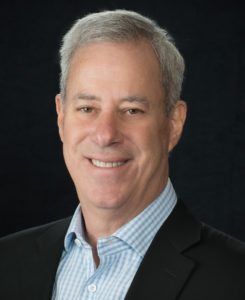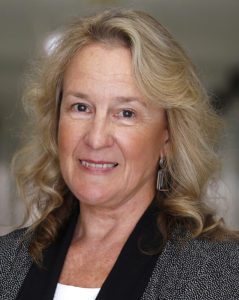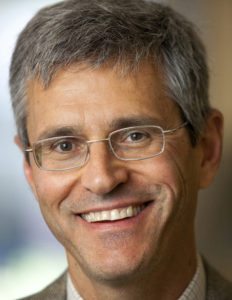
Director, Arizona Alzheimer’s Consortium
Executive Director, Banner Alzheimer’s Institute
CEO, Banner Research
By Brian Powell
Flinn Foundation
Alzheimer’s researchers in Arizona have laid out an ambitious goal, one that would spare millions the physical and emotional toll of the devastating disease.
Dr. Eric Reiman, an internationally renowned brain-imaging researcher and director of the Arizona Alzheimer’s Consortium, says that could happen in less than a decade.
“I think we have a 50 percent chance to find and support the approval of a prevention therapy between 2023 and 2025,” Reiman says. “When we started, it was a zero percent chance that the world could do that.”
Established in 1998, the Arizona Alzheimer’s Consortium is a statewide collaborative effort involving many of Arizona’s leading research institutions, committed to the scientific understanding and early detection of Alzheimer’s disease and finding preventive therapies, as well as public outreach and education about the disease and caregiving.
The work of more than 150 scientists at the seven principal organizations and three affiliated members, which includes hospitals, universities, and medical schools, has led to more than 4,000 publications, 1,000 research grants, and generated more than $1.5 billion in new grants, contracts, and investments.
“The opportunity for prevention is to try to intervene with very promising treatments before the onset of symptoms—before the disease has ravaged the brain,” says Reiman, whose primary role is executive director of the Banner Alzheimer’s Institute. “Even modestly effective treatment (delivered through an injection or infusion, vaccine, or oral medication) would have a profound public-health benefit.”
The state’s Alzheimer’s researchers have received international media attention—plus two 60 Minutes features—for their part in a large ongoing clinical trial of one kindred in Colombia involving 1,200 people who are certain to get Alzheimer’s disease by the average age of 44 because of a rare genetic mutation.
Closer to home, in a state with an estimated 130,000 sufferers of Alzheimer’s disease, researchers have made groundbreaking contributions to understanding Alzheimer’s disease mechanisms and risk factors, and helped to re-conceptualize Alzheimer’s as a disease that begins many years before the onset of symptoms, Reiman says.

Director, Evelyn F. McKnight Brain Institute,
University of Arizona
Carol Barnes, a University of Arizona Regents’ Professor of Psychology, Neurology, and Neuroscience, director of the consortium’s pilot-grant program, and chair of the group’s internal scientific advisory committee, says physicians can benefit from the consortium’s work in a number of ways.
“One is access to advice from us on how to separate facts from myths about normal aging, and about what are the most promising ways to promote healthy brain and cognitive aging,” Barnes says. “Another benefit is the ability to learn about and gain access to clinical trials and interventions for neurodegenerative diseases that are being conducted by scientists across the consortium.”
The Consortium
The Arizona Alzheimer’s Consortium’s work is possible because of funding appropriated by the Arizona Legislature, typically ranging from between $1 million and $4 million a year. This year, the consortium is receiving $2.1 million in state money, in addition to $1.5 million in matching funds from the seven institutions: Arizona State University, Banner Alzheimer’s Institute, Banner Sun Health Research Institute, Barrow Neurological Institute, Mayo Clinic Arizona, the Translational Genomics Research Institute, and the University of Arizona.
“The money from the state is mainly used as an incubator to help recruit the best and brightest minds, and train the best and brightest people here in Arizona, to generate new findings and new initiatives,” Reiman says.
Consortium administrative director David Jerman says the consortium will fund 56 projects during the 2018 fiscal year.
The members have a number of complementary strengths, including brain imaging, genomics, the basic and cognitive neurosciences, therapeutics, and clinical and neuropathology research, among other subjects.

Professor of Neurology, Mayo Clinic College of Medicine
Medical Director for Service, Mayo Clinic
“Our work creates a culture of excellence in regard to diagnosis, management, and advancing knowledge through clinical and basic research, including clinical trials of new medications,” says Dr. Richard Caselli, a Mayo Clinic professor of neurology and associate director of the consortium’s federally-funded disease center. “Dr. Reiman’s leadership in Alzheimer’s prevention trials is particularly notable in that regard. We also reach out to underserved populations, including Latino and American Indian communities.”
Caselli says his focus at Mayo Clinic is on cognitive aging and how patterns differ based on genetic, and other, risk factors for Alzheimer’s disease. This has helped to flesh out the cognitive profile of preclinical Alzheimer’s disease, he says.
Mayo Clinic also studies the health of people with two, one, or zero copies of the ABOE4 gene, which helps to identify those with a genetic risk, and has helped to standardize prevention trials.
Barrow Neurological Institute leads productive clinical trials and has a group of scientists with strengths in brain-imaging research, specifically MRIs.
The world’s premier brain- and body-donation program can be found at the Banner Sun Health Research Institute in Sun City, with a highly concentrated senior population, providing high-quality brain tissue to researchers around the world.
The recently created ASU-Banner Neurogenerative Research Center is intended to become one of the world’s largest basic-science and translational research centers for the fight against Alzheimer’s and other neurodegenerative diseases. ASU has committed to the center 20 labs in the new Biodesign Institute Building C that will open next year, Reiman says.
TGen complements the consortium with its neurogenomics division, helping to identify susceptibility genes and biomarkers and providing technology unavailable elsewhere in the state, and is involved with the Banner-ASU Neurogenerative Research Center.
The University of Arizona has made new investments in innovation and neuroscience with strengths in brain aging, imaging, and cognitive science.
Barnes says her research has been directed towards an understanding of the brain mechanisms responsible for memory decline known to occur during normative aging. “It is my belief,” she says, “that one needs to first uncover the changes that are expected to occur as we age, so that we can detect and diagnose normal from pathological brain and cognitive changes. This will facilitate the most effective therapeutics to be developed for diseases such as Alzheimer’s disease.”
Banner Alzheimer’s Institute, which leads the Alzheimer’s Prevention Initiative, is focused on multiple clinical trials—including the Colombia study—biomarker studies, and creating a national standard of dementia care that better addresses medical and non-medical needs in patients and family caregivers. According to the Alzheimer’s Association, 35 percent of Alzheimer’s caregivers report their own health has worsened.
The institute also hosts the Alzheimer’s Prevention Registry to ensure recruiting goals are met for clinical trials. Today, the registry includes 270,000 people throughout North America.
The consortium’s affiliated organizations include the University of Arizona College of Medicine-Phoenix, which is studying the relationship between head injuries and Alzheimer’s; the Critical Path Institute in Tucson, which is providing shared resources of data and accelerating the path for the evaluation and approval of treatments; and Midwestern University in Glendale, which has basic-science strengths.
In 2001, the consortium launched the Arizona Alzheimer’s Disease Center, sponsored by the National Institute on Aging, a division of the National Institutes of Health. The five-year grant has been renewed three times, most recently in 2016.
Reiman, a general psychiatrist by background who moved to Arizona in 1988, says that Alzheimer’s was not always his specialty. He recalls that soon after his arrival to Arizona, essentially out of desperation, he started reaching out to people with complementary strengths in behavioral neurosciences and imaging, looking for ways to work together. He began to study Alzheimer’s disease intensely in the 1990s, helping to spur the collaborations that exist today.
“I think we have a 50 percent chance to find and support the approval of a prevention therapy between 2023 and 2025. When we started, it was a zero percent chance that the world could do that.”
—Eric M. Reiman, M.D.
Public Outreach
According to the Alzheimer’s Association, an estimated 5.5 million Americans are living with Alzheimer’s disease. It afflicts 10 percent of those 65 or older and 45 percent of those 85 and older, and projections suggest that as many as 16 million Americans will be impacted by 2050.
In Arizona, 130,000 people are estimated to have Alzheimer’s. By 2025, that number is expected to be 200,000—a 54 percent increase.
In 2017, Alzheimer’s and other dementias will cost the nation $259 billion—a figure that could rise to $1.1 trillion by 2050.
And more than 100 million families across the world will be impacted by the disease before today’s young adults become senior citizens, Reiman says.
In addition to developing prevention therapies, a mission of the consortium is to educate Arizona residents about Alzheimer’s disease. The consortium conducts outreach to physicians, other medical professionals, patients, and family caregivers.
To that end, the consortium is inviting the public to a free, half-day conference on Nov. 9 at the East Valley Institute of Technology in Mesa. The outreach-and-education effort will focus on disseminating ongoing advancements in Alzheimer’s research, and the latest in prevention therapies and caregiving, Jerman says.
For more information about the consortium, or to register for the conference, visit http://azalz.org.
IF YOU GO:
2017 Arizona Alzheimer’s Consortium Public Conference
Free (Registration required)
Thursday, November 9, 2017
8 a.m. to 1:15 p.m.
East Valley Institute of Technology
1601 W. Main St., Mesa
QUICK FACTS:
Founded in 1998
$1.5 billion in grants and investments
150 scientists
4,000 publications
1,000 research grants and contracts